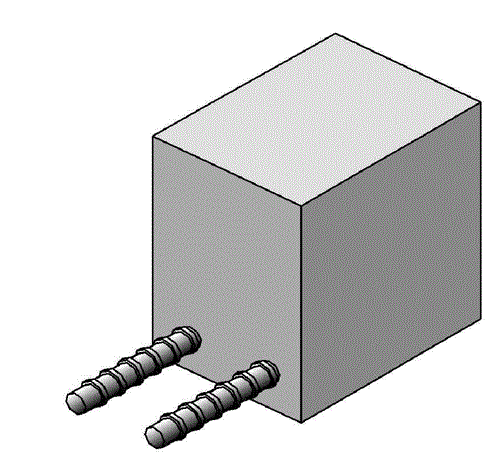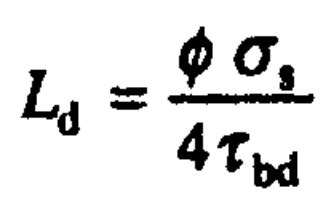Development length becomes most crucial concept to understand when it comes to reinforcement concrete structures. Have you ever wondered what makes development length so important in case of RCC structures ? What is it that makes concrete different from other building materials ( Like steel, timer, glass) so we must emphasize on this? Lets take a dive into the concept of development length.
Plain concrete( which is a mixture of cement, fine aggregate, coarse aggregate & water) is assumed to behave homogeneous in nature. Thereby the forces applied on concrete are expected to transfer within concrete uniformly. On the other hand, materials like timber & steel are naturally occurring homogeneous building material. Whereas reinforced concrete have combination of steel & concrete. Now for a structure to work, the transfer of forces within the material must happen effectively, that is the force applied reinforced concrete block has to transfer to steel rebar and concrete both. So lets take an example of concrete block with steel rebars embedded in it.

Now as you push, pull, bend or twist to this system (concrete + steel rebars), the same effect must be there on both concrete & steel. For this to happen the bond or connection between the two materials must be such that it makes the transfer forces possible. Lets draw an analogy with a more practical situation here, take an example of pen between a notebook.

As you start pulling the pen outside the notebook, it would resist slowly for sometime because of the friction between the pages and pen. Once the applied pull reaches the maximum friction between the pen would start to slip & eventually would come out. In this particular mechanism neither the pen has reached its maximum possible stresses nor the notebook, but the system has failed, because of connection between the two. Similar is the situation for reinforced concrete, if the bond between steel & concrete fails the system would not work anymore. Ideally the bond between the two should sustain the minimum of strength of two materials.
For this bond to work effectively certain length of reinforcement is to be provided so that it can withhold the transfer forces between the concrete & steel. Once this transfer of forces has been ensured system has to work. Now the point to discuss here is that what should be design capacity of this bond between concrete & steel rebar. The bond should be as strong as minimum of the concrete & steel rebars’ capacity. Now lets get onto some calculation part for this.
(Bond Stress) * (Contact surface area) = Tensile strength of rebar

As it can be seen in the formula above that development length would depend on the bond stresses between the concrete & steel. Further these bond stresses would depend on nature of forces in the system. That is the region of RCC which is of consideration in under compression, tension or any other loading. According the bond stress between two materials the required development would differ.
This is a brief post on development length, any doubts or suggestions related to the topic are welcomed
Comments are closed